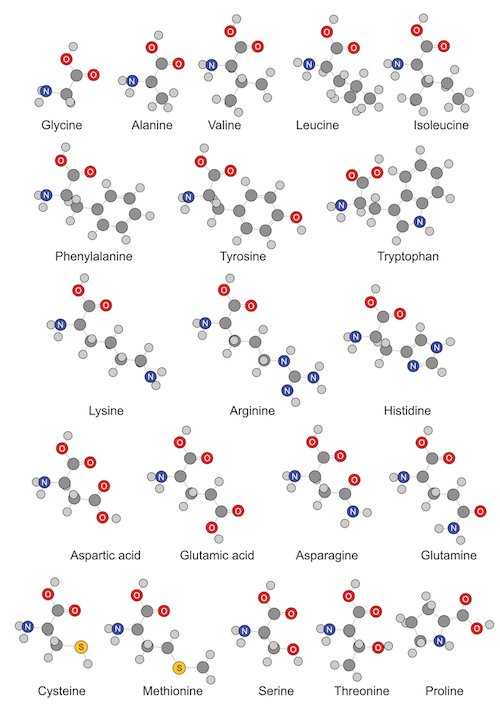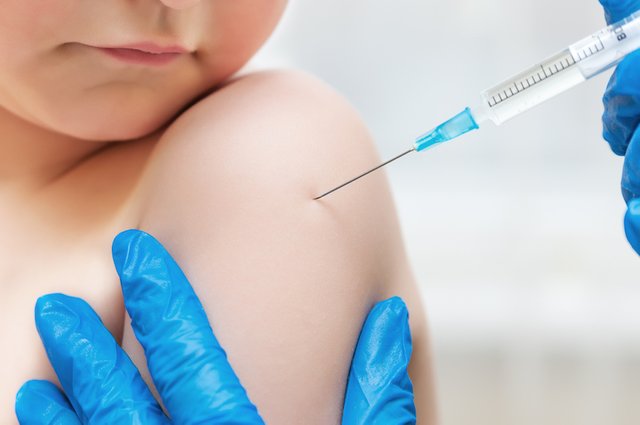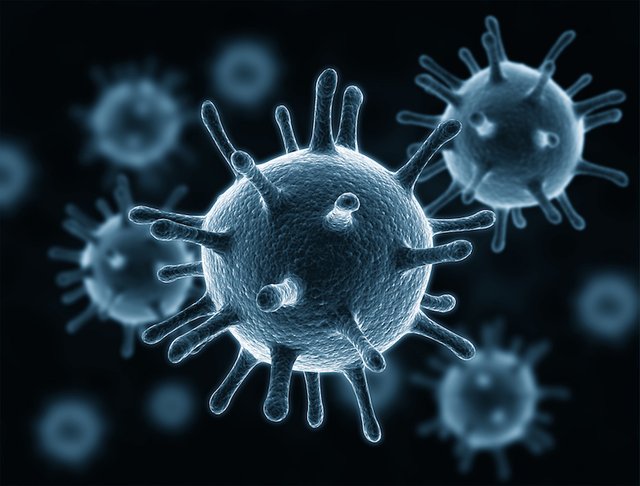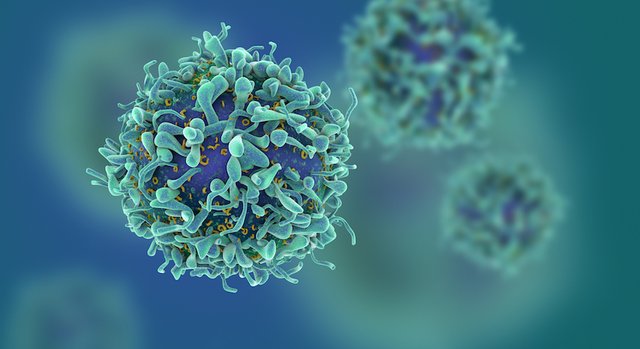TIL - Synthetic Biology Could Create Safer Vaccines
Introduction
I have been fascinated by microbiology and virology for some time and that is why this subject and article are "right up my alley".
Technically the article was from yesterday but I didn't get to post it out till now.
The original article is in Ars Technica:
Summary and my thoughts on the article :
(note my thoughts are based on information in the article, not the paper itself as it is behind a paywall)
All life on earth (that we know of) uses proteins composed of 20 (or occasionally 21) amino acids.

The 20 amino acids that comprise nearly all natural proteins.
Even viruses (which may or may not be alive depending on your definition of life) utilise these to build their proteins - being parasites they must use YOUR (or another host's) cellular machinery to replicate themselves so that makes sense.
It seems that a team from Peking University has been working on a technique to create influenza viruses from artificial amino acids.
3D rendering of influenza virus
What is the benefit you might ask? According to the article:
How can artificial amino acids help with this? Well, if you make a virus that depends on them, then it can only reproduce in cells that will provide that amino acid. Since that would exclude all of our cells, using this virus as a vaccine poses no risk of creating an infection. To the immune system, it should look a lot like a normal virus, so it should be an effective vaccine.
You have the immunological advantage of using a complete virus without the inherent risks:
Giving standard live viruses is risky even if they are attenuated versions as they can mutate giving rise to infection in the host. This is all the more dangerous in hosts who are immunocompromised and may not be able to mount a robust response. Other alternatives such as giving only components of the whole virus can lead to an inadequate immune response.
This (from what I can see) gives the best of both situations. A full (or close enough) immune response without the ability for replication or mutation.
Also it should work for any type of virus (in theory at least).
3D rendering of T-cells
It also means that there should be less need to use adjuvants (e.g. Aluminium salts) which have been a source of controversy. For those who are unfamiliar with what adjuvants are here is the CDC definition:
An adjuvant is a substance that is added to a vaccine to increase the body's immune response to the vaccine. Vaccines containing adjuvants are tested for safety in clinical trials before they are licensed for use in the United States, and they are continuously monitored by CDC and FDA.
Whatever your feelings about vaccines it makes sense that removing such components might actually result in them being safer for certain patients.
That can only be a good thing in my opinion.
Your Reward for Reading:)
If you like my work and aren't already, please follow me and check out my blog (I mainly discuss photography but I do other topics too) - @thecryptofiend
Photo Credits: All uncredited photos are taken from my personal Thinkstock Photography account. More information can be provided on request.
Some of my other recent posts
- Death and Dying - personal musings on how we deal with it and how that affects our lives
- In the News: Judge Grants IRS Permission to Pursue Coinbase Customer Data - My Thoughts
- How to Get Noticed if You Are A New User on Steemit
- The Other Side of the Coin - Dealing with the Onboarding Issue and Some Ways of Helping
- Get Paid Not Pwned - the Power of Slogans.
- Steemit Quick Start Guide: Step by Step from Registration to First Post




Ya, that makes me a bit nervous.But I like the puppy and kitten so all's good.
I understand. It's early stages yet though. They will need to test it throughly before it will ever be used on people.
Thankfully.....yeesh!
I suspect it will be at least 5 to 10 years maybe longer if there are problems with manufacturing or cost reduction.
This post has been linked to from another place on Steem.
Learn more about and upvote to support linkback bot v0.5. Flag this comment if you don't want the bot to continue posting linkbacks for your posts.
Built by @ontofractal
This is interesting, I will be curious to see how well it works in practice. I mean, the non-natural amino acids still correspond to a codon (and all possible combinations are in play currently) so in the cell the codons will still put some amino acid there if the virus was able to replicate. Interesting post man. :)
Yes in the article they do discuss that a bit. They note that the codon that produces the non human amino acid in the virus is a stop signal in human cells. That basically prevents the replication from progressing but my molecular biology is way out of date and also I don't know how accurate that is since I can't see the actual paper right now. Thanks:) I think I will need to do some revision on this kind of stuff as my books are at least ten years out of date now.
Well that would be a good solution use TAA TAG or TGA and put the non-natural amino acid in with a tRNA that recognizes one of those. Then in humans we would not have that tRNA so the viral proteins would just prematurely terminate. Not much has changed (in general) in the past 10 years! Your books are still probably pretty accurate!!
Yes in fact they use UAG which I think (if I remember this right as it is hazy for me in my memory now) would correspond to TAG? I will check the books out and see if I still have the newer ones as I suspect one of my brothers may have taken it with him when he was doing his basic sciences at Uni. They are so expensive that they have a habit of going walkies on their own!
UAG is the RNA sequence, TAG is DNA. They are the same codon (the amber stop codon), I just write codon sequences in the DNA sequence form... perhaps its a bad/confusing habit!
Yes that is what I was thinking because you don't have uracil in DNA - yes they are amber stops. My knowledge is rusty though! Don't worry about it I understood what you meant.
Cool. What do you think about little tiny robots working in our bodies to fix things? Will it be as great as it sounds. Or realistic?
People are already working on it. I suspect it will happen and it will work. The question is really when. I'd say we are at least 20 years away from anything but the most basic nanobots but technological breakthroughs could accelerate that a lot.
It will happen though.
I also suspect we will see more synthetic micro-organisms being put to use too perhaps on a faster timeframe.
Initially these will be repurposed existing bacteria and the like but eventually they might be completely synthetic.
The lines between technology and biology will gradually blur as the century progresses.
Cool thanks for the interesting article
Youre welcome:)
Great, if it works as described. Seems like an incredibly difficult thing to engineer though: a virus with the correct surface protiens built using different amino acids. Best of luck to them, it would allow the manufacture of vaccines for virii that are difficult or dangerous to cultivate in their natural form.
Yes it has great promise and exactly it would be particularly beneficial for really dangerous viruses.
upvoted.
Thankyou:)
These corporations are out of control and in hands of eugenics worshiping globalists. Inform yourself a little bit about the kind of stuff they make their job with in poor countries and the sterilizing results of it. Gates+ Soros + research in Africa = engineered ebola.